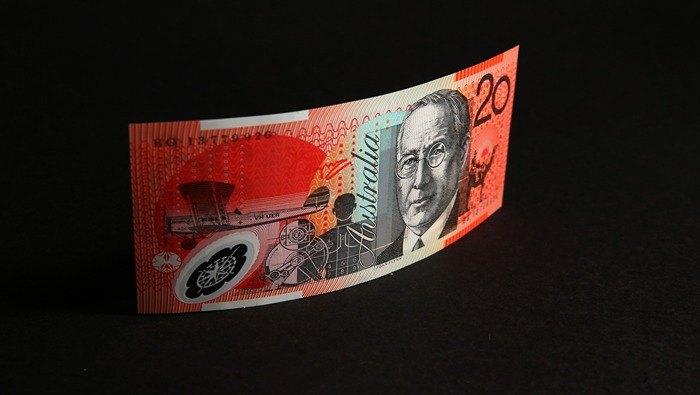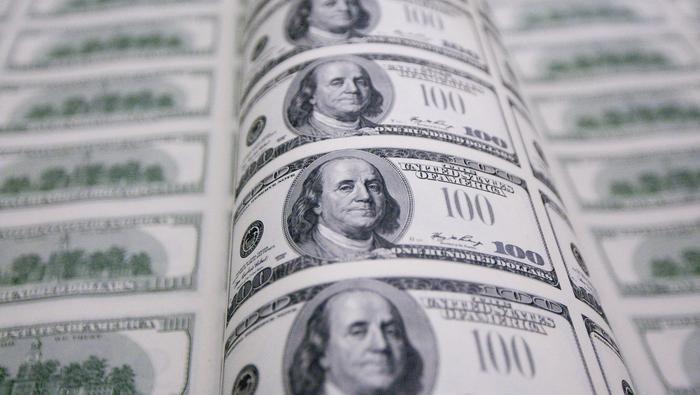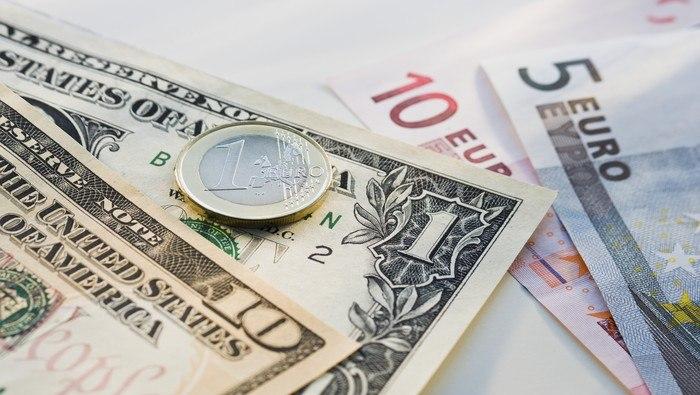2024-03-29 10:30
Q1 Review and the Fed Maintains its Outlook on Interest Rates Q1 2024 has US indices setting new all-time highs as the AI hype skyrocketed a handful of AI stocks to dizzying heights, but gains weren’t just limited to your ‘mega cap’ stocks as the majority of US sectors witnessed gains. The graph below shows the widespread performance for each sector for the S&P 500 up until the time of writing (19 March). The only sector failing to advance was the real estate sector. Graph 1: S&P 500 Sector Performance Q1 Source: Data from Refinitiv Workspace, Compiled by Richard Snow A greater percentage of S&P 500 stocks benefitted from the bull market in Q1. Over 80% of the index traded above their respective 200-day simple moving averages. Looking at the graph below, it is clear to see that when the equity rallies have been fruitful for so many, a turn in fortunes was never too far away. Prior turning points around the 80% mark are highlighted in grey, while even more inclusive rallies registering over 90% also witnessed sharp drops in the moments that followed. However, markets and the Fed are optimistic of guiding the economy to a soft landing when they dial back interest rates later this year, potentially as soon as June but robust data favours July based on current implied probabilities. Graph 2: Percentage of Stocks Within the S&P 500 Trading Above Their 200 SMAs Source: Barchart, Prepared by Richard Snow Will the Fed Keep the Party Going? The Fed met in March and provided an updated version of its summary of economic projections for 2024, 2025, 2026 and the ‘long-run’. Officials narrowly maintained its view that the FOMC will cut the Fed funds rate three times this year, which would leave the Fed funds rate between 4.5% and 4.75%. On the balance of probabilities this appears reasonable but at the end of last year markets had anticipated the possibility of seven cuts into year end. More notably, US growth for 2024 was revised significantly higher, from 1.4% to 2.1%, as was inflation. The upward revisions may place a floor beneath US rates moving forward as the ‘neutral rate’ is anticipated to have shifted higher. Graph 3: Fed Dot Plot (March 2024) Source: Federal Reserve, Refinitiv Workspace A robust economy and resilient labour market could stay the Fed’s hand but equity markets appear impervious to elevated interest rates in the wake of the AI boom. As long as the labour market avoids a sharp deterioration, the status quo appears to remain intact. Consumer confidence appears to be driven by broad job security which supports healthy levels of retail spending and consumption. Global Demand for generative AI and large language models are unlikely to fade, and in contrast, is more likely to accelerate. US chip makers are likely to lead from the front in Q2 as they did in the first quarter. Having a thorough understanding of the fundamentals impacting US equities in Q2, why not see what the technical setup suggests? Risk Sentiment and Broader Momentum Advances at Pace The appetite for riskier assets like stocks has accelerated and according to the Bank of America, $56.1 billion made its way into US equity funds in the week to March 13th, beating the previous record of $53 billion in March 2021. Technology funds unsurprisingly also hit a record of $22 billion over the same period. Graph 4: Record Flows into US Equity Funds in March Source: Bank of America Markets are naturally forward-looking in nature which has seen stocks benefit from rising anticipation of that all important first rate cut, even if it gets delayed somewhat. Furthermore, stocks may continue to receive a boost for FY 2024 due to it being an election year. The S&P 500 has posted some outstanding performances in election years where the sitting president is running for re-election. Since 1944, no election year where the head of state ran for re-election saw a downturn in the benchmark index – only positive returns and some really impressive years too. Graph 5: S&P 500 Performance in Presidential Re-Election Years Source: Strategas, Bloomberg Risks to the Bullish Outlook: Jobs, Credit Defaults, Geopolitics, and Inflation As mentioned previously, the strong jobs market is helping spur on the US economic machine but consumer savings profiles have changed for the worse. Stored up savings from stimulus checks have been drawn down but consumption remains high. This means consumption is being financed using credit that attracts high interest rates, a pattern that personal credit card data confirms below. While it’s true that credit spending adjusted for inflation remains below that seen in 2008, high interest payments on growing balances eat away at household budgets. Savings, as a percentage of disposable income also remains below the pre-pandemic level. US households accumulated over $1 trillion worth of credit card debt in 2023. In theory, high interest rates and higher general prices ought to see less spending but a sharp drop in employment is more likely to hit consumer confidence and curtail spending which impacts company profits and reduces the need for hiring. Graph 6: Excess Savings and Consumer Credit Source: Fed data from FY23 Findings Geopolitics is a word that has been thrown around for some time now and with two major conflicts underway, the potential for new conflicts remain. Wars and economic sanctions can have a massive effect on supply chains and has the potential to impact risk appetite which could weigh on US and global equities. Another potential challenge to equity bulls is the potential for inflation to rear its ugly head as energy prices moved higher at the end of Q1 and the US experienced higher-than-expected inflation data (in some form or another) this year thus far. Lastly, contrarian indicators like the CNN’s Fear and Greed Index has remained at extreme levels (greed) for some time. In previous cases when markets were spurred on by greed or FOMO, a turning point eventually reveals itself. More recently the gauge has remained elevated with the S&P 500 continuing to rise unabated. Image 1: CNN Fear and Greed Index Source: CNN Business Stay up to date with breaking news and market themes currently driving the market by signing up to DailyFX's weekly newsletter: https://www.dailyfx.com/news/equities-q2-fundamental-outlook-ai-euphoria-us-election-and-the-fed-to-drive-us-stocks-20240329.html

2024-03-29 03:30
USD/JPY TECHNICAL OUTLOOK USD/JPY soared during the first three months of 2024, advancing more than 7% before the end of the first quarter. Following this upswing, the pair was trading slightly below its 2022 and 2023 highs, located near the psychological 152.00 level on March 22, an important resistance threshold that traders should keep on their radar in the near term. In terms of potential scenarios, a push beyond 152.00 could theoretically reinforce upward momentum and give way to a rally towards 154.00. However, any bullish breakout may not hold for long, as the Japanese government may quickly step in to support the yen. For this reason, a rise above the 152.00 area could be viewed as an opportunity to fade strength. However, in the absence of FX intervention, bulls could feel emboldened to launch an attack on 158.50, followed by 160.00, the April 1990 high. On the other hand, if USD/JPY is rejected from its current position and pivots to the downside, support emerges at 146.50 near the March swing low and the 200-day simple moving average. Below this, subsequent levels of support materialize at 145.00, 143.50, and 140.45, the latter marking the 23.6% Fibonacci retracement derived from the upward phase spanning 2021 to 2022. Additional losses beyond this juncture would shift focus towards 137.00 and subsequently to 133.25. USD/JPY Weekly Chart Source: TradingView, Prepared by Diego Colman EUR/JPY TECHNICAL OUTLOOK EUR/JPY also advanced sharply in the first quarter of the year, briefly topping the 165.00 threshold, and hitting its strongest mark in nearly 16 years. While bulls appear to be in control of the steering wheel, we are unlikely to see a sustained move above 165.00 because Japanese authorities, who seek to prevent substantial depreciation of the yen, may step in to contain the bleeding. In the unexpected case that EUR/JPY manages to break past 165.00 decisively and Tokyo remains on the sidelines, buyers may feel emboldened to launch an attack on the upper boundary of a long-term ascending channel at 168.75. If euro’s momentum continues to build unchecked, the market could set its sights on the 2008 highs near the psychological 170.00 level. Alternatively, if upward impetus starts fading and prices shift downwards over the coming weeks, sellers may muster the courage to challenge trendline support and the 200-day simple moving average near 159.70. The pair may attempt to bottom out in this area before rebounding, but should a breakdown materialize, bulls may head for the hills, paving the way for a retracement towards channel support at 153.10. Subsequent losses from this point could precipitate a drop towards 151.60, followed by 148.70. EUR/JPY Weekly Chart Source: TradingView, Prepared by Diego Colman Discover out top 3 trading opportunities for the second quarter. Request the guide now! GBP/JPY TECHNICAL OUTLOOK The British pound was no exception and also strengthened dramatically against the Japanese yen in the first quarter, with GBP/JPY rising above the 190.00 handle to levels not tested since August 2015. With traders positioning for a rate cut from the Bank of England in the second quarter and the Bank of Japan finally normalizing its stance, the path of least resistance may be lower for the pair in the medium term despite its constructive technical outlook. In the event of a bearish reversal, GBP/JPY may encounter support around 189.00 and 184.75 thereafter, where the 200-day simple moving average meets a medium-term ascending trendline at the time of writing. Subsequent losses beyond the aforementioned thresholds could draw attention towards 178.00 - key swing lows of December and October last year. The pair may establish a foothold in the region; however, a drop below it could prompt a move towards 176.50, followed by 172.25. On the other hand, if bulls maintain their grip on the market and propel the exchange higher, resistance emerges at 193.50, this year’s peak. Drawing from past patterns, bears may resist another bullish advance at this juncture. However, in the event of a clean and decisive breakout, a rally towards the 2015 highs near 196.00 could be on the horizon. GBP/JPY Weekly Chart Source: TradingView, Prepared by Diego Colman https://www.dailyfx.com/news/forex-japanese-yen-q2-technical-forecast-usd-jpy-eur-jpy-gbp-jpy-at-critical-juncture-20240329.html

2024-03-29 00:00
Australian Dollar Q2 Fundamental Outlook The Australian Dollar has endured a miserable couple of years against its big brother from the United States. Weakness has continued into 2024 so far. But there might be some better news ahead for Aussie bulls, even if much of it is likely to come as a ‘US Dollar weakness’ story rather than anything wonderful from the Australian economy. Rising US interest rates and the Greenback’s ‘haven’ status along with broad-based risk aversion have all conspired against the Australian Dollar. The Australian economy has done rather better in troubled times than some of its western peers, but you’d never know it from the AUD/USD chart. As we head into a new quarter, however, the US Federal Reserve remains quite sure that interest rates will start to come down this year. This has taken a predictable toll on the greenback and seen riskier, growth-linked assets like the Australian Dollar perk up a bit. Australian borrowing costs remain at their inflation-fighting peaks. While the next move there might be a cut too, the Reserve Bank of Australia will need to be a lot more certain that inflation will return to its target range before it acts. That certainty will be a while coming. The most recent Australian inflation numbers showed an annualized growth 0f 4.1%. That was much below 2022’s 7.8% peak, but still well above the RBA’s 2-3% mandate. So, the prospect of lower US rates while Australia’s stay put will offer the Aussie some support. There are also some signs that relations between Australia and major trading partner China are thawing somewhat. Even so there are probably limits to this newfound chumminess thanks in part to Australia’ participation in the controversial ‘AUKUS’ defense arrangement with the United States and Britian, which China hates. Take your trading skills up a notch. Uncover opportunities in AUD/USD, with a holistic strategy that integrates insights from fundamental and technical analysis. Don't miss out get your guide now! Significant AUD Gains May Have to Wait Still, the prospect of a weaker Dollar and a less risk-averse market backdrop should support the Aussie now. But the full effect isn’t likely to be felt until the back end of this year when those Fed rate cuts are expected to come. Most Australian banks expect AUD/USD to be above 0.70 by the end of 2024 and, if US inflation plays ball and allows the Fed to cut as planned, the Australian Dollar may stabilize and could well start to rise, albeit cautiously. There are clear risks to this view, however. The path lower for US rates might be longer than the market now hopes, while conflicts in Ukraine and Gaza retain the sad potential to snuff out risk appetite at any point, even if no other flashpoint ignites. It’s worth noting too that the currency is in a longer-term downtrend against the US Dollar which goes back to early 2021. Even if rises are seen this year, they seem unlikely to reverse that. https://www.dailyfx.com/news/forex-australian-dollar-q2-fundamental-forecast-long-aud-usd-downtrend-may-be-fading-at-last-20240329.html

2024-03-28 14:00
Pound Sterling (GBP) Analysis ONS confirms UK technical recession after final data print EUR/GBP heads lower, back into the prior trading range GBP/USD attempts to lift off of channel support Get your hands on the brand new Pound Sterling Q2 outlook today for exclusive insights into key market catalysts that should be on every trader's radar: ONS Confirms UK Technical Recession after Final Data Print The Office for National Statistics (ONS) confirmed the dire state of the UK economy as the final quarter of last year contracted 0.3% from Q3. The condition for a ‘technical recession’ is two consecutive quarters of negative GDP growth, meaning the slight 0.1% contraction in Q3 helped meet the definition. The elevated bank rate is taking its toll on the economy, but the February CPI data revealed a broad and encouraging drop in inflationary pressures. Should this continue, as the Bank of England (BoE) suggests it will, the pound may come under pressure in the coming weeks. Central banks begin to narrow down the ideal start date for rate cuts but there are still some within the BoE’s monetary policy committee that feel expectations around rate cuts are too optimistic. Catherine Mann is one such critic, pointing towards the fact that the UK has stronger wage growth data than both the US and EU and to align rate cut expectations with these two nations is not accurate. Jonathan Haskel echoed the same sentiment, according to reports from the Financial Times, stating that rate cuts should be “a long way off”. Haskel also mentioned he does not think the headline inflation figures provide an accurate picture of the persistence of inflationary pressures. Mann and Haskell were the final two hawks to succumb to the broader view within the MPC to keep rate on hold. EUR/GBP Heads Lower, Back into the Prior Trading Range EUR/GBP failed to retest the 200-day simple moving average (SMA) and subsequently dropped, so much so, that the pair is trading once more, within the broader trading channel. Numerous attempts to breakout of the channel fell short, as sufficient volatility remains a problem across the FX space. EUR/GBP broke below 0.8560 and now tests the 50-day simple moving average, followed by channel support down at 0.8515. The euro appears weak as markets now look towards a 50% chance of a potential second 25 basis point cut in July. Multiple ECB member shave come out in recent weeks referring to the June meeting for that first rate cut. EUR/GBP Daily Chart Source: TradingView, prepared by Richard Snow GBP/USD is one of the most liquid and most actively traded FX pairs in the world. Acquire a solid foundational knowledge that all traders should know, below: GBP/USD Attempts to Lift Off of Channel Support GBP/USD appears to have found a short-term floor at channel support (1.2585), which also coincides with the 200 SMA. Should sterling find some strength from here, the 50 SMA is the next gauge for bulls, with 1.2736 as a potential target followed by a return to 1.2800. Support remains at 1.2585. There is a fair amount of US data between now and next Friday. Later today we anticipate final Q4 GDP to remains the same when the final data comes in then on the Good Friday holiday, US PCE data and Jerome Powell’s speech become the focal points. Next week, US ISM services data and jobs data will be the pick of the bunch. Employment figures are anticipated to moderate slightly to 200k and of course, be mindful of a potential revision to the prior print as has been the trend. GBP/USD Daily Chart Source: TradingView, prepared by Richard Snow Stay up to date with the latest breaking news and themes driving the market by signing up to our weekly newsletter: https://www.dailyfx.com/news/pound-sterling-update-uk-recession-confirmed-by-final-gdp-data-gbp-mixed-20240328.html

2024-03-28 08:53
US Dollar Latest – EUR/USD, GBP/USD, USD/JPY US data releases will direct the dollar’s short-term future. EUR/USD looking for a sub-1.0800 break For all major central bank meeting dates, see the DailyFX Central Bank Calendar A potentially tricky end to the week with a slew of Bank Holidays on Friday and Monday leaving some markets open and some closed. Tomorrow also sees the release of this week’s data point of note, US PCE. The core reading y/y is seen holding steady at 2.8%, while the closely watched PCE Price Index y/y is seen nudging 0.1% higher to 2.5%. Any deviation from these figures will likely cause a US dollar reaction, especially in holiday-thinned markets. Today sees the release of the final look at US Q4 GDP (12:30 UK) and Michigan Consumer Sentiment for March (14:00 UK). The US dollar is picking up a bid going into these data releases and the long weekend, helped by a softer Euro. The US dollar index is closing in on the mid-February swing high and a clear break above would leave the dollar back at highs last seen in November 2023. US Dollar Index Daily Price Chart Euro Latest – German GDP Seen at Just 0.1% in 2024, EUR/USD Under Pressure The Euro remains under pressure and is testing big figure support at 1.0800 against the US dollar. Recent market focus on the weakness of the German economy has triggered speculation that the European Central Bank may go for back-to-back rate cuts, starting at the June meeting, ahead of the August break. The latest market pricing shows an implied rate of 3.50% for the July meeting. A break below 1.0787 would leave EUR/USD vulnerable to a further sell-off with 1.0698 the next level of support. The pair have broken below all three simple moving averages and this leaves EUR/USD vulnerable to further losses. EUR/USD Daily Price Chart IG retail trader data shows 55.17% of traders are net-long with the ratio of traders long to short at 1.23 to 1.The number of traders net-long is 0.73% higher than yesterday and 43.72% higher than last week, while the number of traders net-short is 4.39% lower than yesterday and 21.98% lower than last week. We typically take a contrarian view to crowd sentiment, and the fact traders are net-long suggests EUR/USD prices may continue to fall. GBP/USD is just above1.2600 and is set to test the recently supportive 200-day simple moving average, currently at 1.2588. A break below would turn the chart further negative, with the 50% Fibonacci retracement at 1.2471 as the first line of support. GBP/USD Daily Price Chart USD/JPY remains at levels that may provoke official intervention by the Japanese authorities. The BoJ recently moved interest rates out of negative territory as it began to unwind decades of ultra-loose monetary policy, but the Yen remains weak. Official talk yesterday produced a small sell-off in USD/JPY back to 151 but this is now being reversed. If Japanese officials ramp up the rhetoric, a long weekend with low liquidity could see USD/JPY move sharply. FX Intervention Threat Steps up a Notch after USD/JPY Hits a Crucial Level USD/JPY Daily Price Chart All Charts via TradingView What are your views on the US Dollar – bullish or bearish?? You can let us know via the form at the end of this piece or you can contact the author via Twitter @nickcawley1. https://www.dailyfx.com/news/us-dollar-latest-eur-usd-gbp-usd-usd-jpy-forecasts-ahead-of-us-data-20240328.html

2024-03-27 17:00
EUR/USD Prices, Charts, and Analysis The German economy is struggling according to five leading economic institutes. Two ECB rate cuts before the August holiday break? Learn How to Trade EUR/USD with Our Complimentary Guide The German economy is in trouble and is expected to expand by the barest of margins in 2024, according to five leading economic research institutes. The institutes have revised their change in German GDP in the current year, ‘significantly downward by 1.2 percentage points to 0.1%, compared to their fall report.’ The German government recently cut their 2024 growth forecast to just 0.2%, with one official saying that the country’s economy is in ‘troubled waters’. The German economy contracted by 0.3% in Q3 2023 and by 0.2% in the fourth quarter. Joint Economic Forecast Spring 2024 The European Central Bank (ECB) is expected to cut its borrowing rate by 25 basis points at the June 6th policy meeting, and according to current market pricing, they may cut again in July, ahead of the August holiday season. The German economy will need the ECB to aggressively unwind its current restrictive monetary policy so that it can grow in the second half of the year. EUR/USD is trading around 1.0815, a fraction above the recent double 1.0800 low. The US dollar has regained some strength in recent days and a combination of a strong USD/weak EUR will likely see the pair test this recent low shortly. Below here, 1.0787 comes into focus ahead of the mid-February lows seen at a fraction under 1.0700. EUR/USD Daily Price Chart Charts using TradingView Retail trader data shows 54.96% of traders are net-long with the ratio of traders long to short at 1.22 to 1.The number of traders net-long is 5.09% higher than yesterday and 3.17% lower from last week, while the number of traders net-short is 1.29% higher than yesterday and 3.11% higher from last week. We typically take a contrarian view to crowd sentiment, and the fact traders are net-long suggests EUR/USD prices may continue to fall. What is your view on the EURO – bullish or bearish?? You can let us know via the form at the end of this piece or you can contact the author via Twitter @nickcawley1. https://www.dailyfx.com/news/euro-latest-german-gdp-seen-at-just-0-1-in-2024-eur-usd-under-pressure-20240327.html
